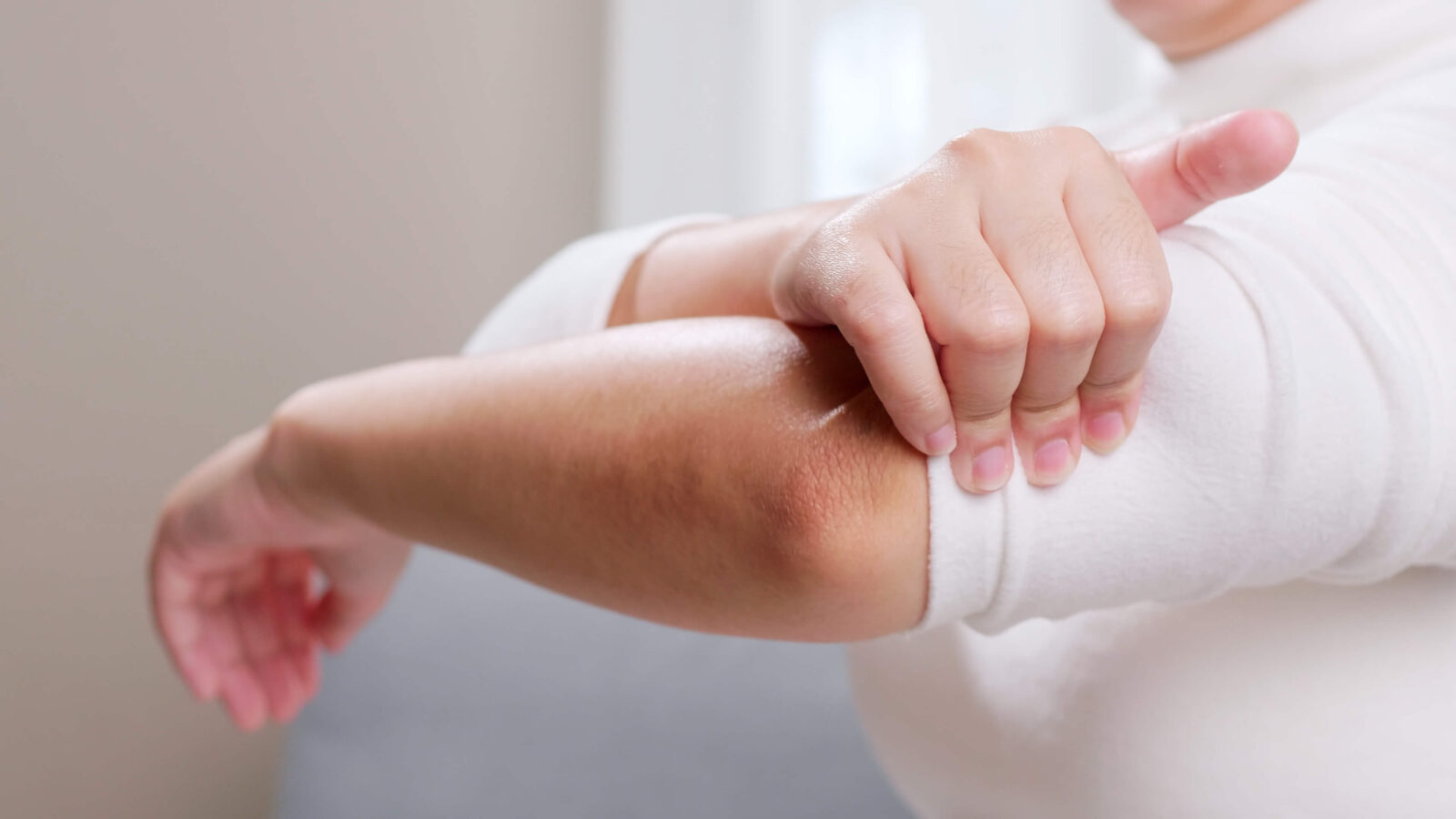
Medically reviewed by Misty Seidenburg
The elbow joint is one of the most complex in the human body. A sudden, forceful bend or twist in an awkward position can leave you with considerable elbow pain. A sprain is just one of many possible causes of elbow pain. Learn to recognize the signs of a sprained elbow and how to treat your injury to ease discomfort and regain healthy joint mobility and function.
The elbow joint is located where the long bone (humerus) of the upper arm connects to the two bones of the forearm (the radius and ulna.) As a hinge joint, the elbow can bend the arm up and down. The upper part of the radius also rotates which allows the forearm to twist.
Ligaments are tough, fibrous bands of connective tissue that attach the bones of the upper arm and the forearm to the bones in the elbow joint. They also hold bones in proper position and aid in their movement. An elbow sprain is an injury to these ligaments.
Ligaments can overstretch or tear in many ways, including:
You don’t have to be an elite athlete to develop a sprain. Although sprains are common sports injuries, damage occurs in other ways too. You can bend your arm the wrong way doing something as routine as carrying groceries in from the car.
It’s easy to make the connection between single trauma to the arm or elbow and immediate elbow pain. The connection between repetitive stress on the elbow joint and ligament damage is not always as clear.
Here are some common signs and symptoms of a sprained elbow to look for:
So, you have some sprained elbow symptoms, but how can you be sure what’s causing your elbow pain? Elbow pain should never be overlooked. If you don’t address your symptoms, you risk causing further damage. Or, you may have a more serious injury that requires urgent medical care.
As a general rule, it is wise to see your healthcare provider or physical therapist if elbow pain and other symptoms interfere with your regular activities or lingers beyond a reasonable amount of time (usually 10 days.) Elbow swelling and bruising should also be monitored, and checked out if they worsen over time.
After a fall, contact hit, or other trauma to the elbow, get immediate medical attention if you notice obvious deformity in the elbow or arm, fever, chills, or sharp intense pain that affects range of motion in the joint.
Once your elbow pain has a diagnosis, you can take steps to manage pain and rehabilitate the joint safely and gradually. We achieve this through:
These are just some of the many conservative yet effective physical therapy treatments and techniques available to help you feel and function better after an elbow injury. Your treatment plan is individualized just for you based on your health history, symptoms, and diagnosis.
Sprains are graded by the extent and severity of ligament damage. Grade-3 sprains are complete ligament tears and are the most severe type of sprain. They typically involve joint instability and may require surgical repair and reconstruction. After surgery, you can work on building strength and increasing flexibility in the affected arm with physical therapy.
Are you ready to find out what’s behind that pesky elbow pain? Find a physical therapy clinic near you.